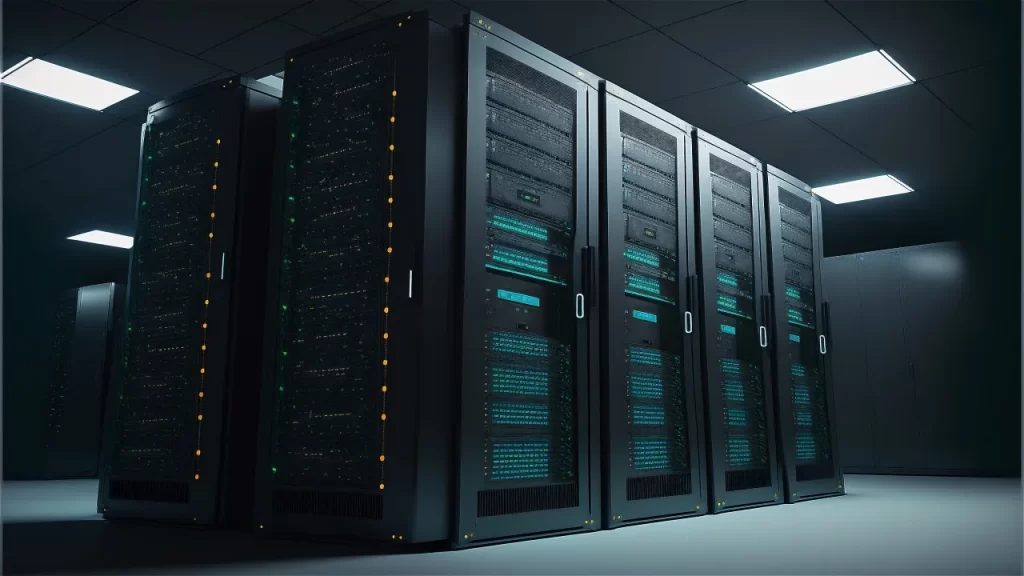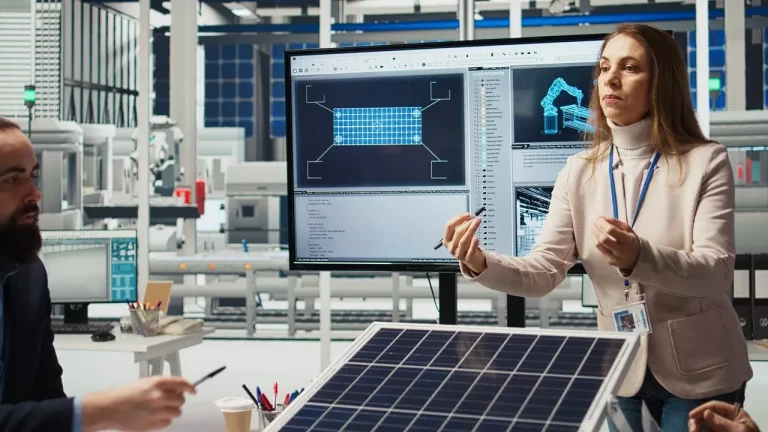As artificial intelligence (AI) is affecting almost every sphere of human life, including learning, treatment, banking, and even fun, Microsoft continues to play a leading role in the AI revolution. On the contrary, based on rumours of slowing down the advancement, Microsoft has further strengthened its long-term infrastructure vision, announced that it would spend an all-time high of $80 billion in AI and Cloud data centres in FY 2025.
This development not only silences any rumors about scaled-back ambitions but also sets a new industry benchmark for capital commitment in digital infrastructure. Microsoft’s move reflects growing demand for generative AI services, hybrid cloud platforms, and edge computing services sectors that now define modern enterprise operations.
A Strategic Investment in AI Infrastructure
Microsoft has drawn out some $80 billion for these solutions, which is much higher than what they have allocated for the fiscal year 2023, and this is only the infrastructure investment. It was released by Microsoft shortly after registering strong earnings for the first quarter of fiscal year 2025 in the cloud sector.
In his interview, Microsoft’s vice chair and president Brad Smith also disclosed that over half of the spending will still be directed to the United States thus maintaining the domestic infrastructure for AI readiness. To further develop his point, Smith was able to outline four corners of investment strategy that reflect the direction of national interest currently, including workforce development, energy efficiency, and cybersecurity.
In other words: “This is not about building more data centers, as one of my meetings at the policy forum made clear. AI is about creating more efficient, environment friendly and safe infrastructure to support the advancement of the next generation of artificial intelligence technologies.
Hyperscale, the leading data centers of Microsoft are going to use next-generation technologies such as liquid cooling the concept of modularity and advanced AI accelerators in order to support large language models and real-time applications.
A Global Expansion Strategy
Microsoft’s infrastructure push extends well beyond U.S. borders. The company is aggressively expanding its global footprint to meet soaring AI and cloud computing demand in international markets.
India
India remains one of Microsoft’s most promising growth territories. Due to the current increased acceptance of digital solutions in industries, the company is expanding its data center regions in Navi Mumbai and Hyderabad. With the TS Government’s support, Microsoft is progressing through initiatives that will support the state to enjoy future development in digitalization and advancement in artificial intelligence.
The above are in conformity with India’s plan under the Digital India which is a plan that seeks to make India a global powerhouse for technology.
United Kingdom
Microsoft has decided to invest £ 2.5 billion or $ 3.16 billion in expanding cloud computing capabilities in the United Kingdom and stated that it will build a new campus for a data center in North Yorkshire. This is Microsoft’s largest investment in the UK to date and comes as the demand for more secure and California not sovereign cloud services grow across Europe.
Even Prime Minister Rishi Sunak took time to comment on the news, referring to it as a ‘ huge vote of confidence in both the technology sector and the UK’s capability in AI’.
Japan
Microsoft’s plans involve the provision of ¥400 billion ($2.9 billion) for investments in the Japanese data center as well as AI in the next two years. In this regard, new infrastructure is being developed to enhance Japan’s digital government goals and industrial development. This follows the growing market demands for local cloud services and local data laws and regulations tightening in the Asia-Pacific region.
Other Emerging Markets
Microsoft is also strengthening its presence in Southeast Asia, Germany, Poland, Chile, and Africa. Each of these regions plays a strategic role in the company’s vision of a globally distributed, low-latency cloud network that can support AI deployment at scale.
The Stargate Project: AI Supercomputing on the Horizon
One of the most significant and secretive projects of Microsoft is the Stargate project that is implemented in cooperation with OpenAI and other such large-scale companies as Oracle and SoftBank. This plan of $100 billion will lead to the creation of the next-generation ‘AI supercomputer by 2028.
The first 10 facilities of the Stargate project will be constructed in Texas and aim to concentrate on AI, as well as have their own processors, networks, and sustainable cooling systems. The centers are projected to create over 100,000 high-skilled jobs in engineering, construction, operations, and support services across the United States.
Stargate’s long-term goal is to support the training and inference needs of the most advanced AI models, potentially surpassing the capabilities of today’s largest supercomputers.
Financial Strength Backing the Vision
Microsoft’s data center ambitions are strongly supported by its financial muscle. Generally, within the latest financial year, shares increased by 9% because of the growth in Azure and the utilization of AI in monetization in Microsoft 365, Dynamics, and GitHub Copilot.
The company’s capital expenditure for Q1 FY2025 hit $21.4 billion, nearly 50% higher than the same quarter last year. This is linked to new expenditure of capital in making new acquisitions in land, chips, energy infrastructure, and next-gen servers, all are necessary for AI operations.
Morgan Stanley and Goldman Sachs have increased their target price on Microsoft stock due to the firm’s strengths in artificial intelligence and digitalization trends.
Managing AI Capacity and Supply Chain Challenges
Despite Microsoft’s aggressive expansion, the pace of AI adoption has exposed short-term capacity constraints. OpenAI, its close partner, is reportedly exploring relationships with other cloud and data center providers to alleviate growing bottlenecks in compute availability.
The two categories of GPUs and custom AI chips remain in high demand by organizations that are hurrying to implement the generative AI models. Regarding this, Microsoft is using its cooperation with NVIDIA, AMD, and the Azure Maia AI chip platform to address throughput and reliability issues.
Additionally, Microsoft is investing in more energy-efficient infrastructure, including renewable-powered campuses and advanced cooling systems using direct-to-chip liquid technology. These upgrades aim to minimize the environmental impact of rapid data center expansion.
Sustainability and Policy Alignment
Reliability is explained as being at the centre of Microsoft’s plans for its infrastructure. These strategies also entail that the company will become carbon-negative by 2030, which means that the data center plans also need to be net-zero regarding carbon for constructing, running it, and supplying equipment for the site.
It is also worth mentioning the efforts Microsoft makes in cooperation with policymakers in terms of data center development compliance with national and local legislation. From power grid integration to workforce training, Microsoft’s partnerships are intended to create broad-based economic and environmental benefits.
Conclusion: Staying the Course on AI-Driven Growth
Instead of backing down, Microsoft is running towards the future in the right direction with a strategy for AI infrastructure. Its planned investment of $80 billion by 2025 is by far a testament of faith in the future that AI will define and Microsoft’s claim of control of the architecture.
While constructing continents, new supercomputing centers, and having an innovative approach to sustainability, one thing becomes beyond doubt: Microsoft is not just racing to compete with the AI revolution—it’s leading it.
Specifically, the chip supply and grid capacity are still somewhat problematic; however the company seems to approach these issues from a position of confidence and strength has major financial backing, and a waterfalling commitment to innovation that places it ahead of the pack in the exploding cloud and AI markets.
As artificial intelligence continues to evolve, Microsoft’s infrastructure will serve as the backbone of tomorrow’s smart, connected, and intelligent world.







